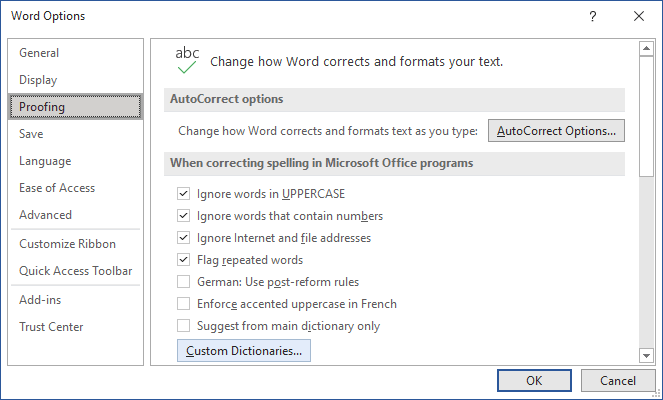

Note that if you open the file you should be able to see all of your custom words. Once you go into that directory you should see the CUSTOM.dic file, which is what you’ll want to back up and transfer to the same location on the other system… or you could put it somewhere else if you’d like, for instance in your Documents folder. Simply record the shortcut you want to set and you’re done. You can quickly add words to the custom dictionary by right-clicking on a word that has. If you want to clear the entire list from the custom dictionary, click Delete all. To remove a word, select the word in the Dictionary list and click Delete. This will open the same keyboard shortcut editor in Method 1. To add a word to the selected custom dictionary, enter a word in the Word(s) edit box and click Add. Click the ‘Customize’ button at the very bottom.
How to make a custom dictionary in word full#
Either way the dialog above should tell you the full path. In the left column, select the button you want to add a keyboard shortcut for. Different generation of Kindle should be set in different ways. The following job is to make the dictionary file work on Kindle. Now all the steps on computer are finished. On the other hand, if the word already exists in the vocabulary, simply increment. 4 Safe eject Kindle and unplug the USB Cable. If the word does not exist in our vocabulary, we want to add it to our word2index dict, instantiate our count of that word to 1, add the index of the word (the next available number in the counter) to the index2word dict, and increment our overall word count by 1. The saved words or phrases, called LingQs, provide an explanation and translation. 3 Paste the dictionary file into the 'dictionaries' folder. I can save new words and phrases to my personal database for later study. You’ll see one of two directories, for Office 2007 versions it’s usually located in the UProof folder, but in older versions it was in the Proof folder. You Can Create Your Own Dictionary At LingQ I can either find something of interest in the LingQ library or import something of interest from another source. To backup your dictionary file, browse down to the path you saw above, or just enter in the following into the location bar in explorer: Note that you should use the Edit Word List dialog in here to make any changes (don’t try and make changes to the file itself, I’ve read about people having issues when doing that) After we transfer the file from the old computer to the new one, you’ll need to use the Add button here to add the dictionary, if it’s not automatically added. This will bring up the screen where you can assign custom dictionaries, as well as see the full path to the current dictionary file.


 0 kommentar(er)
0 kommentar(er)
